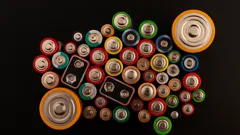311
11
3 minutes
Suggested Articles

First-generation Ivy Leaguers triumph over unique college challenges
Discover key insights, life hacks, and data-driven tips for first-generation college students thriving in prestigious U.S. universities. Find practical strategies, unique challenges, and fresh perspectives essential for student success.

Tech enthusiasts transform daily life with modular phones built for you
Resources & Tools

Fluid Batteries Unleashed: The Bendable Power Revolution Shaping America
Resources & Tools

Superwood Unleashes a Green Revolution Stronger Than Steel in US Cities
Resources & Tools

DARPA’s Laser Power Beaming Breakthrough Sets New World Record
News & Updates

MIT Unveils Game-Changing Off-Grid Cooling Tech for Summer Heat
News & Updates

Thermal AR glasses unlock superhuman vision for safety and everyday adventure
Resources & Tools

Unlocking the Hidden Power of Social Learning and Collective Intelligence
News & Updates

Hidden Recordings Found on Old iPod Reveal Apple Engineer’s Untold Stories
News & Updates

Zero-wire charging finally frees your phone from tangled cables
Resources & Tools

Revolutionary Autofocus Smart Glasses Promise Effortless Crystal-Clear Vision
News & Updates

First-generation Ivy Leaguers triumph over unique college challenges
Hiring

Americans brace for possible Social Security cuts that reshape retirement
News & Updates

Why this Florida data leak changes how we think about privacy
News & Updates

Build your own AI chatbot and unlock hands-on tech superpowers
Resources & Tools

How to outsmart hidden medical expenses in your golden years
Civic Education

California workers secure jobs this summer with new 2025 laws
Hiring
 Love Women Vibes
Love Women Vibes

Comments